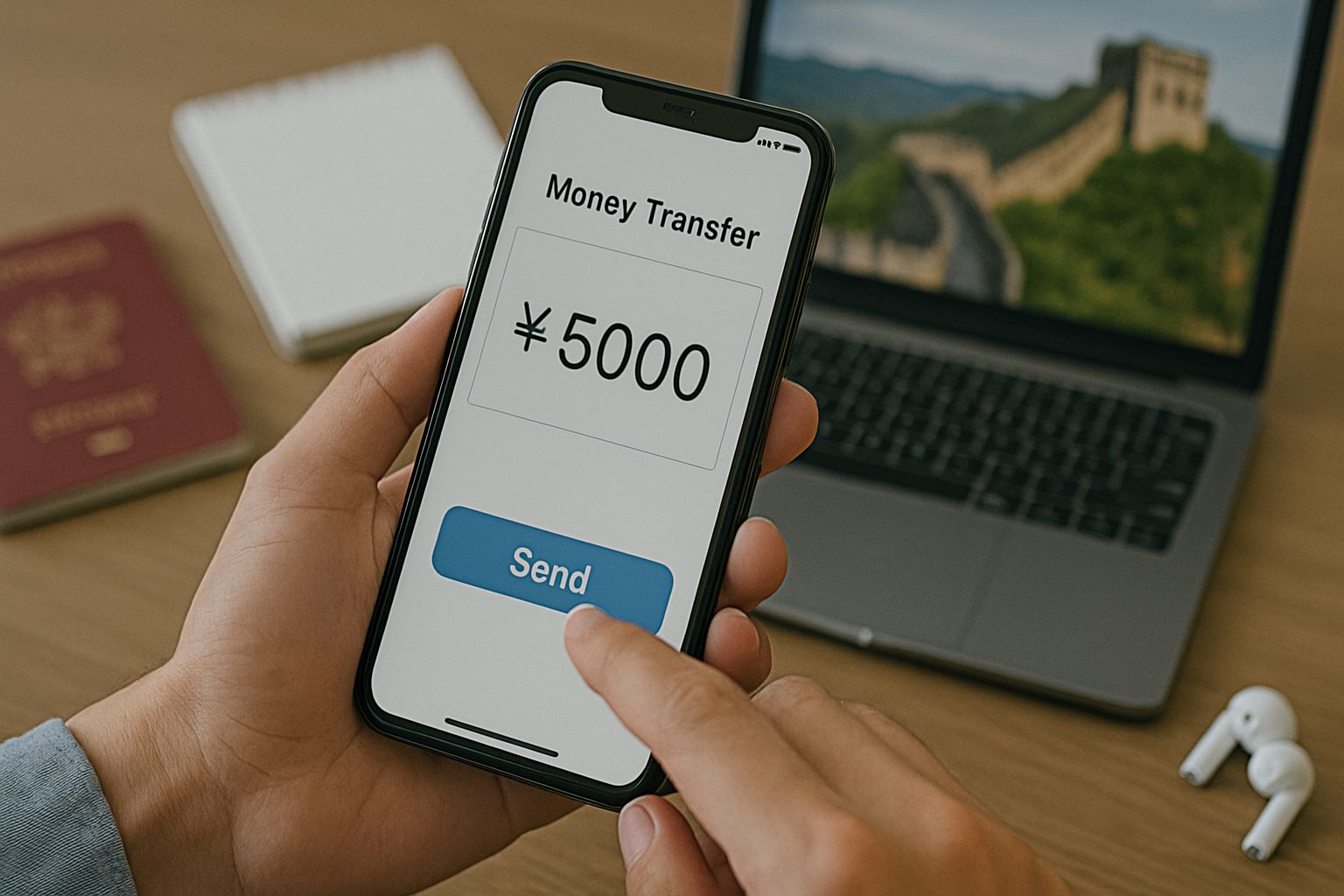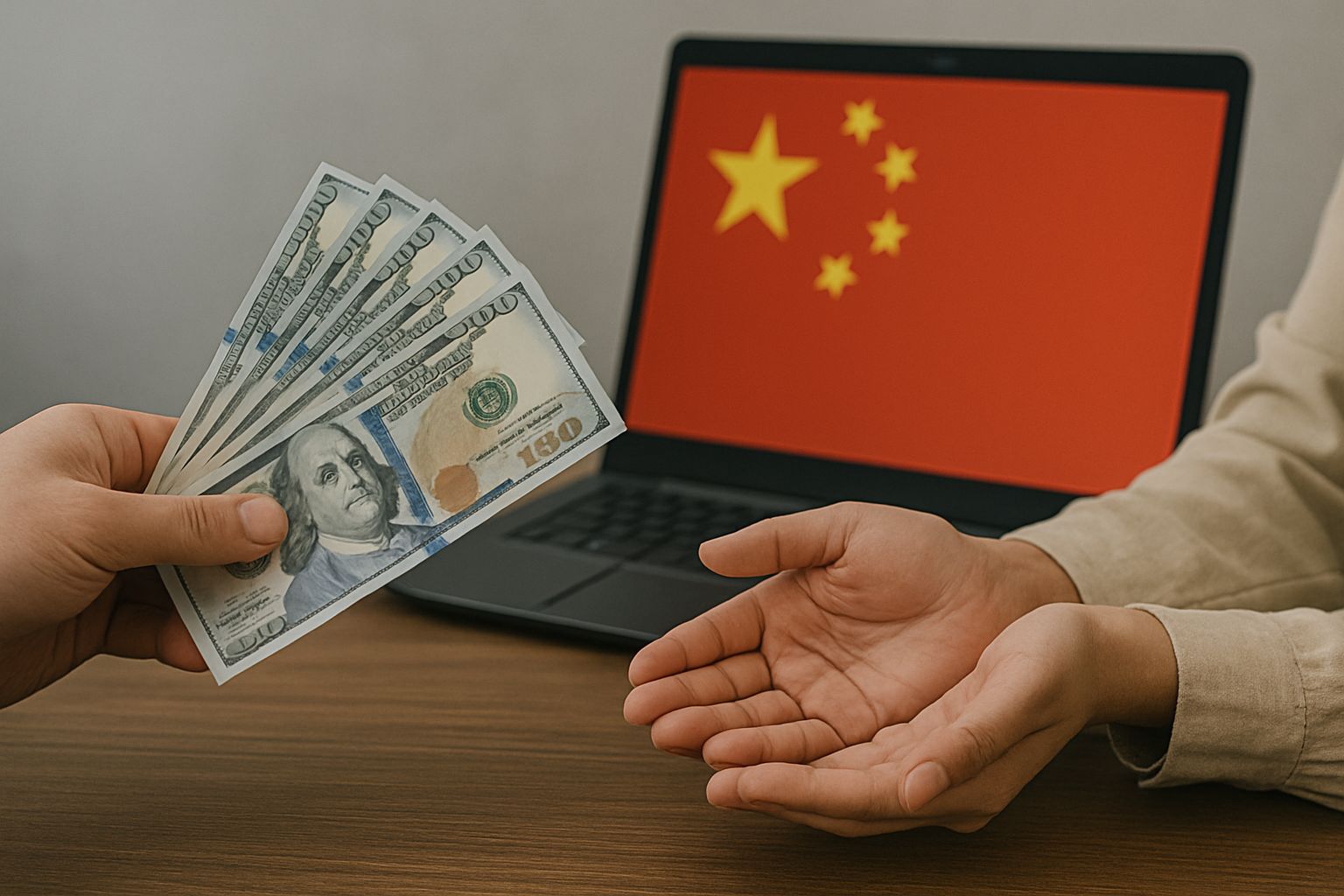The best way to send money to China is a question many people ask, whether for family support, business, or education expenses. With so many options available, finding a method that’s both safe and fast can feel overwhelming.
In this blog, we’ll break down the top ways to transfer money to China and what to look for when choosing the right service. Whether you’re sending a small amount or a large sum, understanding your options will help you save time and money. Let’s explore the safest and quickest ways to get your money where it needs to go.
Looking to import from China? Discover essential tips in our guide on How to Buy Products from China.
Popular Methods to Send Money to China

You have several good options for sending money to China. Each comes with its own costs, speeds, and features.
Bank transfers offer security but usually have higher fees. Online platforms and specialized transfer services often provide better exchange rates and faster delivery.
Bank Transfers
Traditional bank transfers are still a common way to send money to China. Your local bank can wire money directly to Chinese banks using the SWIFT network.
Advantages:
- High security and regulatory protection
- Familiar process for most people
- Direct bank-to-bank transfers
Disadvantages:
- Higher fees ($15-50 per transfer)
- Poor exchange rates with 3-6% markup
- Slower processing (2-5 business days)
Most US banks can send money to major Chinese banks like Bank of China, ICBC, and China Construction Bank. You'll need your recipient's full bank details, including SWIFT code and branch address.
Bank transfers work best for large amounts where security matters most. The process is straightforward, but it can get expensive compared to other options.
Online Payment Platforms
Digital payment platforms have changed how people send money to China. These services usually offer better rates and faster processing than traditional banks.
Popular platforms include:
- Wise - Transfers within minutes at mid-market exchange rates
- Xoom (PayPal) - Quick transfers and several delivery options
- Xe - Good rates for regular transfers
Key benefits:
- Better exchange rates than banks
- Transparent fees
- Real-time tracking
- Easy-to-use mobile apps
Most platforms charge $0-5 in fees. They offer exchange rates much closer to the mid-market rate.
Transfer speeds range from minutes to 24 hours, depending on the provider. You'll need your recipient's bank or mobile wallet details. Some platforms also support cash pickup across China.
Money Transfer Services
Specialized money transfer services often give you the best mix of speed, cost, and convenience for sending money to China.
Top providers include:
- MoneyGram - Instant cash pickup and competitive rates
- Western Union - Large agent network in China
- Remitly - Express and economy transfer options
- Instarem - Low fees for bank transfers
Transfer options:
- Bank account deposits
- Cash pickup at agent locations
- Mobile wallet transfers (Alipay, UnionPay)
- Home delivery in some areas
MoneyGram and Western Union have thousands of pickup locations throughout China. This is great if your recipient doesn't have a bank account or needs cash fast.
Remitly and Instarem focus on digital transfers with lower fees and better rates. Most services set transfer limits between $10,000-25,000 per transaction.
Planning a construction project? Learn about Construction Permit Requirements in China to stay compliant.
Factors to Consider for Safe and Fast Transfers

When sending money to China, three main factors matter: costs, speed, and security. Knowing how fees and exchange rates affect your transfer helps you choose the right service.
Transfer Fees and Exchange Rates
Transfer fees can make a big difference in how much RMB your recipient gets. Providers charge all sorts of fees for sending money to China.
Common fee structures include:
- Fixed transfer fees ($5-$25 per transaction)
- Percentage-based fees (0.5%-2% of transfer amount)
- Wire transfer fees ($15-$50 for bank transfers)
- Hidden fees in poor exchange rates
Exchange rates directly affect your yuan conversion. Even a tiny difference in the rate can cost you a lot on larger transfers.
Banks often offer exchange rates that are 2-4% worse than the mid-market rate. Online transfer services usually beat traditional banks on rates.
Always compare:
- Total transfer cost (fees plus exchange rate markup)
- How much RMB your recipient will actually get
- The real-time exchange rate versus what the provider offers
Transfer Speed and Reliability
Transfer speeds to China vary a lot. Bank wire transfers usually take 1-5 business days to reach Chinese banks.
Online transfer services often deliver yuan faster. Many digital platforms finish transfers to China within minutes or hours.
Speed factors include:
- Provider processing time
- Chinese bank processing
- Compliance checks and verification
- Transfer amount and destination bank
Reliability means your money shows up when promised. Established providers usually have better track records for on-time delivery.
Peak times like Chinese New Year can cause delays. Weekend transfers typically process on the next business day.
Security and Regulatory Compliance
Money transfers to China have to follow both US and Chinese regulations. Licensed providers use strict security protocols to protect your transfer.
Security features to look for:
- Multi-factor authentication
- Encryption for your personal and financial data
- Fraud prevention systems
- Regulatory licensing and oversight
Chinese authorities keep a close eye on incoming transfers. Your provider should handle all compliance requirements for you.
Bank transfers offer high security but usually cost more. Licensed online services offer similar security with better rates.
Stay away from unlicensed services that promise unrealistically good rates or instant transfers. They may not protect your money or follow Chinese rules.
Reputable providers show their licensing info and compliance details clearly on their websites.
Tips for Choosing the Best Option
Picking the right money transfer service to China takes a bit of comparison. You need to look at fees, exchange rates, delivery methods, and your recipient's preferences.
Comparing Costs and Convenience
Compare the total cost, not just the transfer fee. Some services lure you in with low fees but sneak in a 1-3% markup on the exchange rate.
Check the mid-market rate on financial news sites first. Then see what each provider really gives you for the same amount.
Cost comparison factors:
- Transfer fees (flat rate or percentage)
- Exchange rate markup
- Total amount your recipient receives
- Speed of delivery
Wise typically charges 0.5-1% with clear pricing. Western Union and Xoom often have higher fees but let you pick up cash quickly.
For transfers under $1,000, flat-fee services might cost more than percentage-based ones. For larger amounts over $5,000, providers like OFX get more competitive with their percentage fees.
Think about convenience too. Mobile apps make repeat transfers simple. Some services remember your recipient's details and even offer rate alerts.
Understanding Recipient Requirements
Your recipient's location and preferences can change which service works best. Urban areas in China have more bank branches and ATMs than rural spots.
Ask your recipient about:
- Preferred receiving method (bank deposit, mobile wallet, cash pickup)
- Banking hours and branch locations
- Mobile wallet use (Alipay, WeChat Pay)
- What documentation they have available
Bank deposits are best for recipients with Chinese bank accounts. Mobile wallet transfers through Alipay are popular for everyday spending.
Cash pickup with Western Union or Xoom helps recipients without bank accounts. These services have agent locations even in smaller cities.
Some people like mobile wallets for privacy and convenience. Others trust traditional bank deposits more, especially for larger sums.
Staying Updated on Legal and Financial Rules
China's State Administration of Foreign Exchange (SAFE) requires full real-name verification for all inbound foreign transfers. If documentation is missing or incomplete, transfers take longer.
Current requirements include:
- Recipient's full legal name matching their ID
- Purpose of transfer declaration
- Supporting documents for large amounts
- Annual foreign exchange limits
Individuals can receive up to $50,000 USD equivalent per year through official channels. Anything above that needs special approval from Chinese authorities.
Business transfers have different rules and need more documentation, like invoices and contracts.
Regulations change often, so check before you send. Some services help guide you through compliance and paperwork.
Transfer times get longer during Chinese holidays when banks close. Plan ahead for Chinese New Year and other big holidays.
Expanding your business? Understand the China Merger Control Review process for smoother transactions.
Conclusion: Best Way to Send Money to China
Choosing the best way to send money to China depends on your specific needs—whether it’s speed, cost, or convenience. Services like Wise, Western Union, and Remitly offer reliable options for personal and business transfers. Always verify recipient details to ensure smooth transactions and avoid delays.
Staying informed about the latest transfer methods can save you time and money. With the right choice, sending money to China can be safe, fast, and hassle-free.
For more insights on China’s economic landscape, check out our article on China Supply Chain.
Frequently Asked Questions: Best Way to Send Money to China
What is the best way to transfer money to China?
It depends on your needs. Wise is great for personal transfers under $1,000 with low fees and transparent rates. For cash pickup, use Western Union or Xoom, as they have extensive agent networks across China.
Can Zelle send money to China?
No, Zelle only works for transfers between U.S. bank accounts within the U.S. It does not support international money transfers to countries like China. You'll need to use dedicated international transfer services such as Wise, Remitly, or Western Union.
Is PayPal safe to send money to China?
PayPal has limited direct options and faces restrictions for sending money to China. While it's generally secure, Xoom (owned by PayPal) is the more reliable service for transfers to China, offering bank deposits and cash pickup. For better rates and more reliable delivery, specialized services like Wise or Remitly are often recommended.
How do I send money to a friend in China?
First, choose a reliable money transfer service that operates in China, such as Wise, Remitly, Western Union, or Xoom. You'll need your friend's full legal name and their preferred receiving method (bank account details, mobile wallet info, or a cash pickup location). Always ensure names match their official ID and complete any required identity verification to prevent transfer delays.
Subscribe to receive updates
Subscribe to receive the latest blog posts to your inbox every week.



